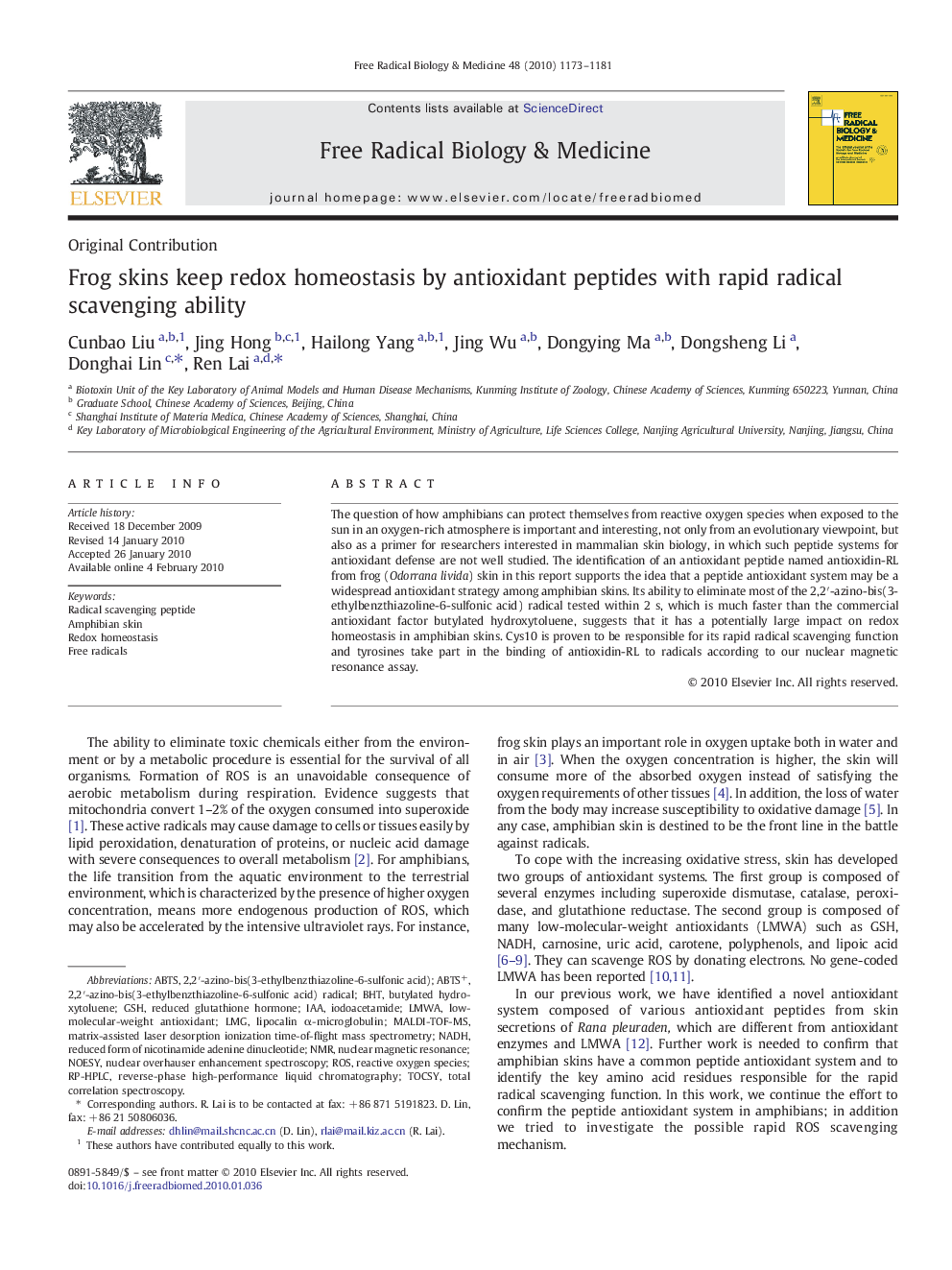| Article ID | Journal | Published Year | Pages | File Type |
|---|---|---|---|---|
| 1909562 | Free Radical Biology and Medicine | 2010 | 9 Pages |
The question of how amphibians can protect themselves from reactive oxygen species when exposed to the sun in an oxygen-rich atmosphere is important and interesting, not only from an evolutionary viewpoint, but also as a primer for researchers interested in mammalian skin biology, in which such peptide systems for antioxidant defense are not well studied. The identification of an antioxidant peptide named antioxidin-RL from frog (Odorrana livida) skin in this report supports the idea that a peptide antioxidant system may be a widespread antioxidant strategy among amphibian skins. Its ability to eliminate most of the 2,2′-azino-bis(3-ethylbenzthiazoline-6-sulfonic acid) radical tested within 2 s, which is much faster than the commercial antioxidant factor butylated hydroxytoluene, suggests that it has a potentially large impact on redox homeostasis in amphibian skins. Cys10 is proven to be responsible for its rapid radical scavenging function and tyrosines take part in the binding of antioxidin-RL to radicals according to our nuclear magnetic resonance assay.
